Surface temperature 22,200 K | Magnitude 1.5 Apparent magnitude (V) 1.5 | |
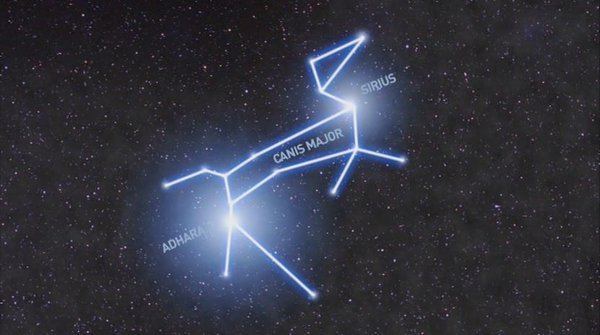 | ||
Radius 9.674 million km (13.9 R☉) Mass 2.506 × 10^31 kg (12.6 M☉) Similar Delta Canis Majoris, Beta Canis Majoris, Eta Canis Majoris, Alpha Crucis, Gamma Canis Majoris | ||
Epsilon Canis Majoris (ε Canis Majoris, abbreviated Epsilon CMa, ε CMa), also named Adhara, is a binary star and, despite being designated 'epsilon', the second brightest star in the constellation of Canis Major and one of the brightest stars in the night sky. About 4.7 million years ago, it was the brightest star in the sky, with an apparent magnitude of -3.99.
Contents

Nomenclature
ε Canis Majoris (Latinised to Epsilon Canis Majoris) is the star's Bayer designation.
It bore the traditional name Adhara (sometimes spelled Adara), derived from the Arabic word عذارى ‘aðāra’, "virgins". In 2016, the International Astronomical Union organized a Working Group on Star Names (WGSN) to catalogue and standardize proper names for stars. The WGSN approved the name Adhara for this star on 21 August 2016 and it is now so entered in the IAU Catalog of Star Names.
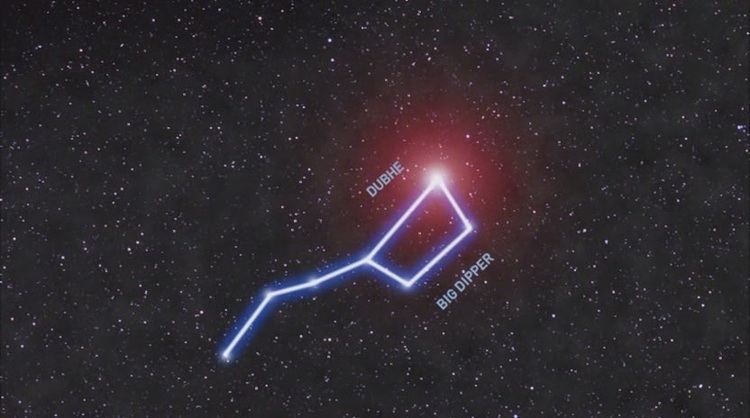
In the 17th century catalogue of stars in the Calendarium of Al Achsasi al Mouakket, this star was designated Aoul al Adzari (أول العذاري - awwal al-adhara), which was translated into Latin as Prima Virginum, meaning First of the Virgins. Along with Delta Canis Majoris (Wezen), Eta Canis Majoris (Aludra) and Omicron² Canis Majoris (Thanih al Adzari), these stars were Al ʽAdhārā (العذاري), 'the Virgins'.
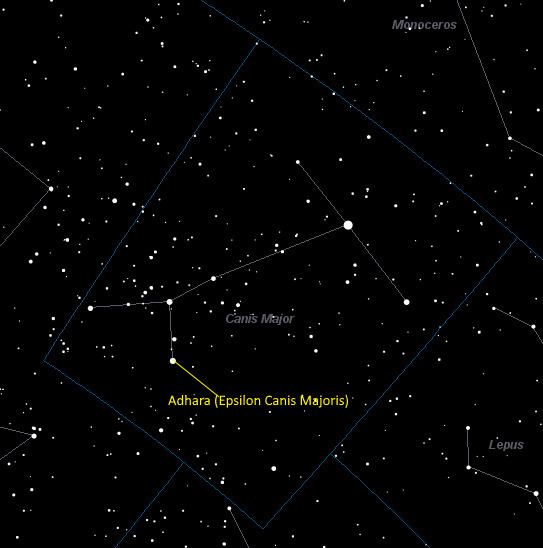
In Chinese, 弧矢 (Hú Shǐ), meaning Bow and Arrow, refers to an asterism consisting of Epsilon Canis Majoris, Delta Canis Majoris, Eta Canis Majoris, HD 63032, HD 65456, Omicron Puppis, k Puppis, Kappa Canis Majoris and Pi Puppis. Consequently, Epsilon Canis Majoris itself is known as 弧矢七 (Hú Shǐ qī, English: the Seventh Star of Bow and Arrow).
Namesake
USS Adhara (AK-71) was a United States Navy Crater class cargo ship named after the star.
Properties
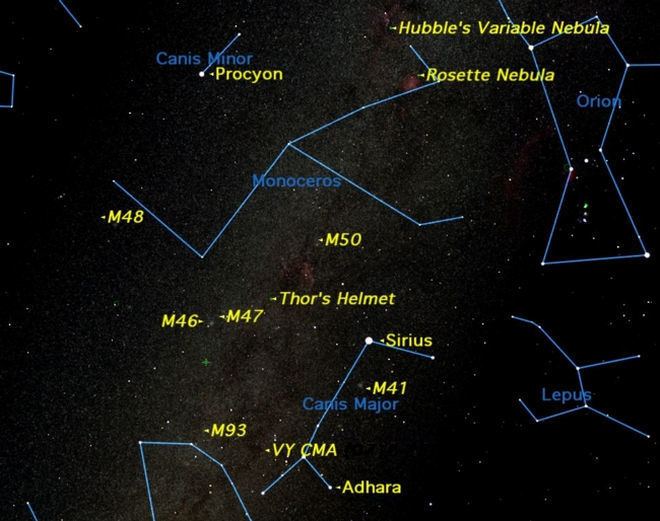
Adhara is a binary star, estimated by the Hipparcos astrometry satellite to lie about 430 light years away from Earth. The main star possesses an apparent magnitude of +1.5 and belongs to the spectral classification B2. Its color is blue or blueish-white, due to the surface temperature of 22,200K. It emits a total radiation equal to 38,700 times that of the Sun. This star is the brightest known extreme ultraviolet source in the night sky. It is the strongest source of photons capable of ionizing hydrogen atoms in interstellar gas near the Sun, and is very important in determining the ionization state of the Local Interstellar Cloud.
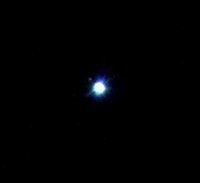
The +7.5 magnitude companion star (the absolute magnitude amounts to +1.9) is at 7.5" away with a position angle of 161° of the main star. Despite the relatively large angular distance the components can only be resolved in large telescopes, since the main star is approximately 250 times brighter than its companion.
A few million years ago, Adhara was much closer to the Sun than it is at present, causing it to be a much brighter star in the night sky. About 4,700,000 years ago, Adhara was 34 light years from the Sun, and was the brightest star in the sky with a magnitude of –3.99. No other star has attained this brightness since, nor will any other star attain this brightness for at least five million years.
Modern legacy
Adhara appears on the national flag of Brazil, symbolising the state of Tocantins.
Adhara also appears as a physical character in the 2007 animated film, Nocturna, as the main character Tim's favourite star.
